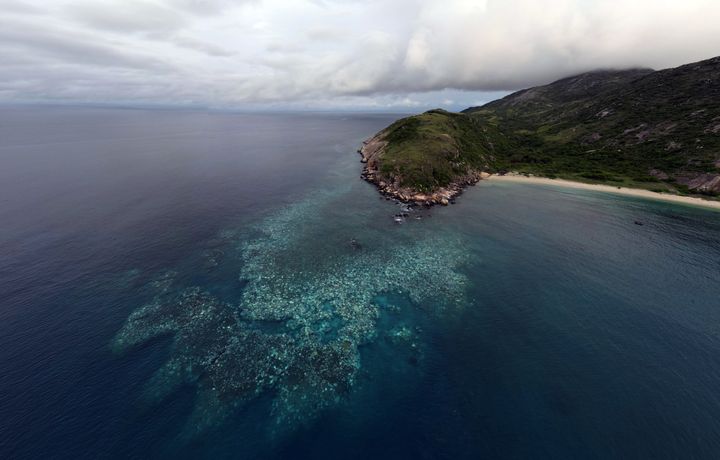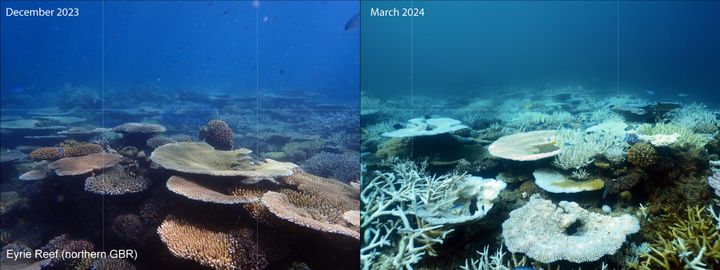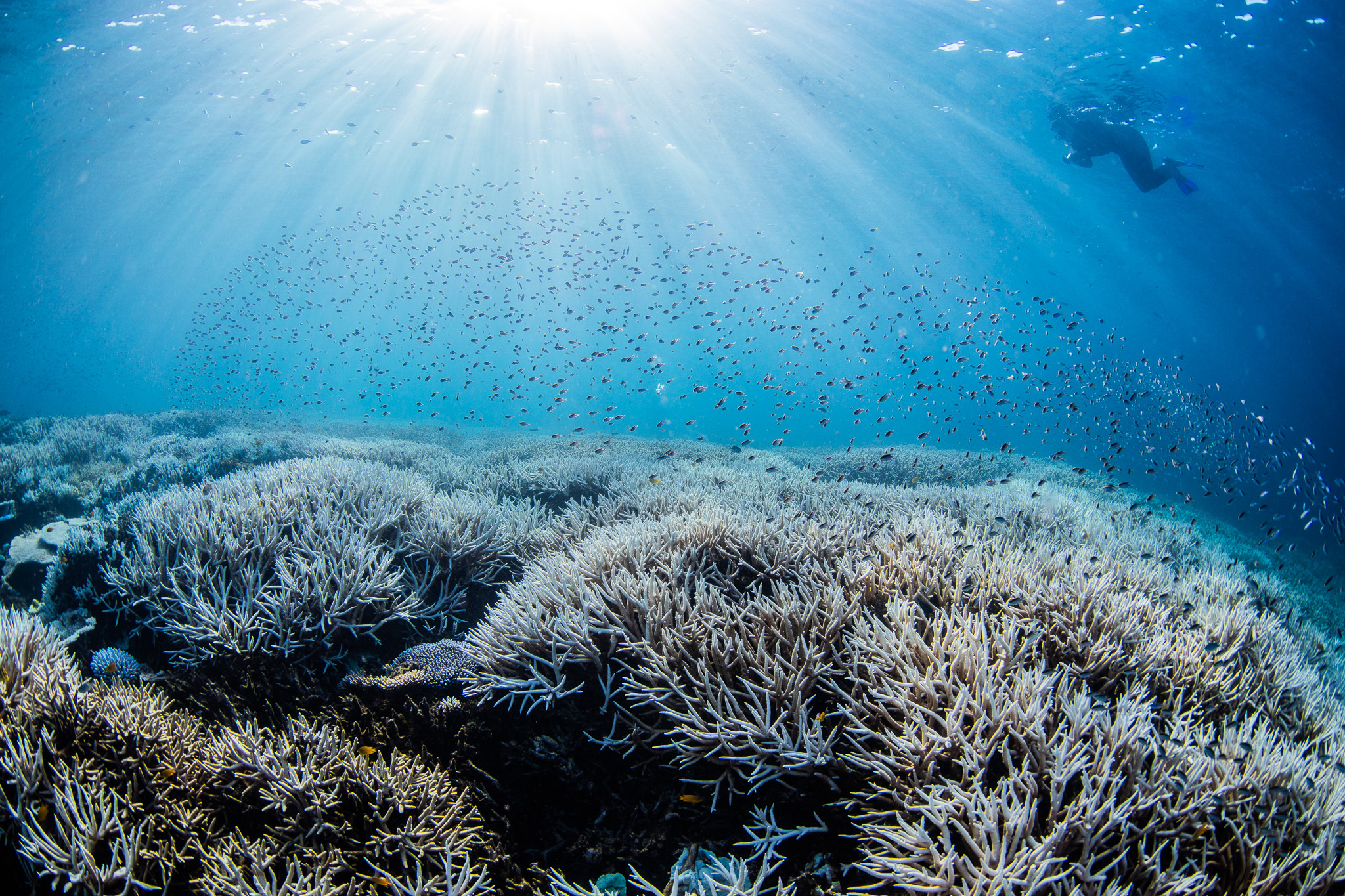New Photos Show Just How Bad Mass Coral Bleaching Is On The Great Barrier Reef
Australia’s Great Barrier Reef is experiencing one of the most extensive and serious coral bleaching events in recorded history after a summer of extreme temperatures and oceanic heat effectively cooked the delicate corals that make up the iconic structure.
The Australian Institute of Marine Science recently completed an intensive, large-scale survey of the reef, which is a system of about 3,000 individual reefs that stretches nearly 1,500 miles along the coastline. For the first time, extreme levels of bleaching have been seen along all regions of the Great Barrier and around 75% of the reefs surveyed showed signs of prevalent bleaching.
Advertisement
Aerial photos released Wednesday show the widespread devastation underway after some areas of the reef were hit by record levels of heat.

Images courtesy of George Roff, CSIRO
The reef has been under severe pressure for a decade following five mass coral bleaching events, in 2016, 2017, 2020, 2022 and 2024.
Advertisement
Scientists declared the latest event in March and noted that the slate of back-to-back events is not normal. There is no evidence of any widespread bleaching along the Great Barrier in the last 500 years of coral record history. The one thing that’s shifted? Climate change.
“Climate change remains the biggest threat to coral reefs globally,” David Wachenfeld, the research program director at the Australian Institute of Marine Science, said at the time. “It causes more frequent and severe marine heatwaves, leading to shortened windows of recovery for corals from bleaching and other disturbances.”
Coral bleaching happens when the delicate structures are stressed by a change in conditions, mainly a shift in temperature. The polyps that make up corals then expel the symbiotic, colorful algae inside them and they turn ghostly white. A bleached coral isn’t dead, but is then highly sensitive and can die if temperatures remain too high.
In recent mass bleaching events along the Great Barrier Reef large swaths of corals have died, a trend scientists will await with dread as the current bleaching continues. Outbreaks of coral-eating crown-of-thorns starfish and two cyclones this year have only added to the stress faced by the Great Barrier.
“The Great Barrier Reef has seen increases in coral cover to high levels in recent years, indicating it is still a resilient system,” Wachenfeld said in a statement this week. “But this resilience has its limits.”
Advertisement
“While these results are still to come, the extent of the heat stress, and the result of the aerial surveys indicate this is one of the most extensive bleaching events the Reef has experienced in AIMS’ nearly 40 years of monitoring,” he added.

Courtesy George Roff, CSIRO

©theundertow.ocean & @diversforclimate
The National Oceanic and Atmospheric Administration recently confirmed the trouble is not only confined to Australia. The world is currently in the midst of its fourth global mass bleaching event on record, with extensive impacts stretching from the Caribbean down to Brazil, through the South Pacific and into the Red Sea and Persian Gulf.
Advertisement
“We’re just reaching a point in this warming cycle where these events are becoming so extreme and they’re just getting worse and worse and worse,” Derek Manzello, the head of NOAA’s Coral Reef Watch, told The Washington Post this week. “This should be a global wake-up call. The fact that corals are bleaching in each ocean basin essentially simultaneously.”

Comments are closed.